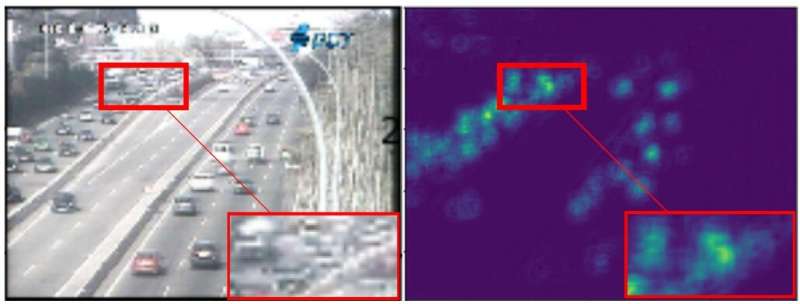A video camera in a public place can tell the density of people or vehicles more accurately

Deep learning applied for image/video processing opened the door for the practical deployment for object detection and identification with acceptable accuracy. Crowd counting is another application of image/video processing. The scientists at Japan Advanced Institute of Science and Technology (JAIST) designed a new DNN with backward connection, which achieved more accurate estimation of the density of objects. It can be applied for estimating human density in the public or vehicle density on a road in order to improve public safety/security and traffic efficiency.
Video surveillance is a standard technique for obtaining information to detect the status of objects. For example, video surveillance employed on a road is monitored to obtain the information on the flow of traffic, occurrence of accidents, and/or the density of vehicles for the purpose of improving security, safety, and/or efficiency of traffic. Another example of video surveillance is human traffic in public. Monitoring the flow and density of people is mandatory to assure the safety of public places, especially for indoor environments.
Obtaining information about the density or number of objects, such as vehicles or people, is called crowd counting. Crowd counting with higher accuracy will offer more seamless control of ITS with less 'jaggy' feedback, or will offer detection of human congestion that may cause accidents. The research group in JAIST led by Dr. Sooksatra and Prof. Atsuo Yoshitaka in collaboration with a research group of SIIT in Thailand proposed a new network employing backward connections in DNN, which achieved higher performance in crowd computing.
"Backward connection in DNN enables us to take advantage of both high-level features and low-level features in an image, and therefore achieves higher performance than before," says Prof. Atsuo Yoshitaka, the head of Yoshitaka Lab. The Yoshitaka lab. is currently developing different kinds of DNNs for industrial applications such as object detection and identification of objects in micrographs, defect detection for industrial products, and DNA analysis for automated diagnosis.
More information: Sorn Sooksatra et al, Redesigned Skip-Network for Crowd Counting with Dilated Convolution and Backward Connection, Journal of Imaging (2020). DOI: 10.3390/jimaging6050028















